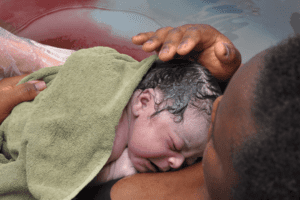Changes Accompanying Pregnancy


- Pregnancy causes the body to undergo a number of changes, some expected, and others more of a surprise.
- In this article we will discuss some of the more common physiological changes, but it is important for each woman to get to know her own body.
- Hormonal changes that accompany pregnancy can affect people in different ways.
- If you have any concerns at all to changes you experience during pregnancy, speak to your doctor.
Abdomen
Perhaps the most well-known change during pregnancy is distension of the abdomen. Some women relish this change in body shape; for others, it is an uncomfortable inconvenience. Answering the questions of when you will ‘start to show’ and how big your belly will get is difficult, as it varies from woman to woman and pregnancy to pregnancy. Typically, first pregnancies take longer to show and subsequent pregnancies are evident earlier. However, this can also vary according to how strong your abdomen muscles were prior to pregnancy and, of course, whether you are pregnant with twins or triplets.
From about 20 weeks of pregnancy onwards, your doctor will measure and track the size of your abdomen. For singlet pregnancies they will be looking for an increase of approximately 1cm per week.
Breasts
During pregnancy, it is usual for the breasts to change in size and a woman may find her bra size alters several times before (and after) delivery. Towards the end of pregnancy, the breasts will start to feel full and heavy as they prepare for breastfeeding. They may start to leak a small amount of colostrum, which is the thick, nutrient-rich milk that is baby’s first food source. Even early on in pregnancy, the breasts may feel tender to the touch and the areolas will often darken and enlarge. Sensitive breasts and tiredness are some of the first signs that a woman is pregnant.
Skin
Up to 90% of women will experience striae gravidarum (stretch marks) and hyperpigmentation of the skin during pregnancy. Why some women are more affected than others remains unclear, however, the increased levels of oestrogen and relaxin are thought to contribute to both conditions. Hyperpigmentation usually manifests as dark patches of skin around the areolas and a dark line (linea nigra) running from the belly button to the pubic bone. When it affects the face it is known as melisma, or the ‘mask of pregnancy’. It usually disappears after birth. Stretch marks will not disappear completely, but will fade with time.
Whilst some women find their complexion is improved during pregnancy and they exhibit a characteristic ‘rosy glow’, others find a worsening of pre-existing skin conditions such as acne and atopic dermatitis. Once again, the underlying cause is likely to be fluctuations in hormone levels. Acne, specifically, can be exacerbated by an increase in male hormones (androgens) during the third trimester.
Hair and nails
It is not uncommon for pregnant women to report thicker, healthier looking hair. Normal hair goes through cycles of growth and rest. During pregnancy, higher levels of oestrogen extend the amount of time hair spends in the growing phase of the cycle, and reduce the time spent resting. Hair loss occurs during the resting phase, so in pregnancy, less hair is shed. Unfortunately, this is a transient effect and is, in a lot of cases, followed by a period of enhanced hair shedding once the baby is born. This increased shedding is known as telogen effluvium and happens because the hair follicles enter a prolonged resting phase. Some women continue to experience hair loss for over a year postpartum.
Hair growth is also enhanced across other areas of the body, such as the abdomen, back and nipples. Usually harmless and temporary, this condition, known as hirsutism, can cause women to feel more self-conscious. If considering a form of hair removal, bear in mind that the skin can be more sensitive during pregnancy. You may also want to consider avoiding using chemical-containing products, such as hair removal creams and bleach whilst you are pregnant, as there is a small chance that they will pass into the bloodstream and affect the baby..
Nails also grow faster during pregnancy and can become stronger. Alternatively, some women find that their nails become more brittle and may split or form grooves.
Feet
Whilst coping with an ever expanding belly and larger breasts may be accepted as par for the course during pregnancy, a change in shoe size may be a change you were not expecting to see. However, up to 60% of pregnant women will experience a change in foot size during gestation. Swelling and water retention are common in the latter stages of pregnancy and this may cause the feet and ankles to enlarge temporarily. After birth the swelling should recede. Alternatively, the release of the hormone relaxin, whose primary function is to soften the muscles of the cervix in preparation for delivery, can cause other muscles and ligaments in the body to soften. This includes those in the feet, resulting in a flattening of the arch and a change in foot length. This change is more likely to be permanent.
Oral Problems
Even the mouth can be affected by pregnancy, with bleeding gums a common complaint of many expectant mothers. Known medically as pregnancy gingivitis, hormonal changes make the gums more susceptible to inflammation and bleeding. The best way of avoiding oral complications during pregnancy is to maintain good hygiene, brushing the teeth after meals and avoiding sugary snacks.
Another factor to consider is that if you are unfortunate enough to suffer from chronic morning sickness, the acidic vomit can be detrimental to your overall oral health. With your teeth probably being one of the last things on your mind, remembering to drink plenty of water will not only keep you hydrated, but will also freshen your mouth and remove excess acid.
Vaginal discharge
Vaginal discharge (leucorrhoea) is completely normal; it starts just before puberty and lasts through to the menopause. It serves a valuable purpose, protecting the female reproductive organs from infection and providing lubrication. During pregnancy, it is not uncommon for levels of discharge to increase, providing increased protection. Normal discharge is clear or milky-white and odourless. Towards the end of pregnancy the discharge may contain pink streaks of a jelly-like substance. This is called ‘a show’ and suggests that labour will follow shortly.
If you have itching around your vagina as well as thick white discharge, it may be a sign of a yeast infection known as thrush. This condition is easily treated, but will require a visit to the doctor as not all antifungal medications are suitable for use whilst pregnant.
Genital varicose veins
Vulvar varicosities, or varicose veins of the vulva, are thought to affect 18-22% of pregnant women. Predominantly due to increased blood flow to the pelvic region and more common in women who have had two or more full-term pregnancies, their prevalence is probably underestimated because of a reluctance to seek medical advice. Often simple observation is the optimum treatment, as most cases will subside upon delivery. In severe cases the veins can be surgically removed, however, this is rare. For many women, the only symptom is a feeling of pressure in the pelvic region. If the veins swell significantly they may feel lumpy to the touch and have a blueish tinge.
This list is certainly not exhaustive, but does cover some of the more common body changes that accompany pregnancy. Ensure that you seek medical advice if you have any concerns at all and remember your doctor will have seen it all (and a lot worse) before.
Get yourself the new mother pack and take care of yourself.
Nabta is reshaping women’s healthcare. We support women with their personal health journeys, from everyday wellbeing to the uniquely female experiences of fertility, pregnancy, and menopause.
Get in touch if you have any questions about this article or any aspect of women’s health. We’re here for you.
Sources:
- Gavrilov, S G. “Vulvar Varicosities: Diagnosis, Treatment, and Prevention.” International Journal of Women’s Health, vol. 9, 28 June 2017, pp. 463–475., doi:10.2147/IJWH.S126165.
- Nierenberg, C. “Body Changes During Pregnancy.” Live Science, 19 May 2015, www.livescience.com/50877-regnancy-body-changes.html.
- Tunzi, M, and G R Gray. “Common Skin Conditions during Pregnancy.” American Family Physician, vol. 75, no. 2, 15 Jan. 2017, pp. 211–218.
- “Vaginal Discharge in Pregnancy.” NHS, www.nhs.uk/conditions/pregnancy-and-baby/vaginal-discharge-pregnant/. Page last reviewed: 28/02/2018.












































